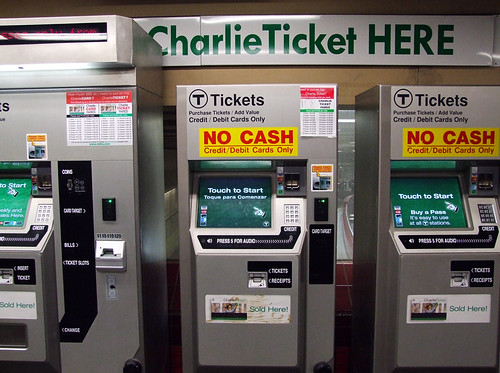
Next March, Montreal will join dozens of public transit systems around the world when it adopts a new contactless smart card that will allow you to store cash value and monthly passes on a single card that will give you access to the bus, metro and commuter train, as well as transit systems in Laval and Longueuil.
Just to give you an idea of the card’s potential, you could load it with an STM monthly pass for unlimited travel on the bus and metro as well as $15 for those times you need to use the train or go to the South Shore. Regardless of what’s stored on the card, you can just tap it against the card reader on any bus or metro turnstile and you’ll be on your way.
Montreal’s transit agencies have been quietly preparing the new card for several years. Ticket booths in metro stations have been enlarged and made more accessible, because when the smart card is introduced, ticket sales and card reloading will be done through automated machines, and ticket vendors will deal primarily with customer service. New fareboxes have been installed on buses; new turnstiles are steadily making their debut in the metro, along with wider, door-style barriers that will make it easier to pass through with a bike, luggage or a stroller.
The STM has a basic smart card FAQ on its website, but, to find out how Montreal will make use of its smart card, it’s probably more helpful to look at how it works in a similarly-sized North American city. This weekend, I drove down to Boston, parked the car and used the city’s bus, trolley and subway system — known as the T — to get around.
Last year, Boston adopted its own smart card, known as the CharlieCard, for use on all of its subway and bus lines. The cards are given away for free (my travelling companions and I found a pile of them sitting around on a shelf at Park Street Station) and can be topped up with a pass or as much money as you would like. Since I was only there for the weekend, I put $5 on the card, which can be done at one of the trilingual (English, Spanish and Chinese) vending machines at T stations or at various convenience stores and supermarkets around town.
What’s most remarkable about the CharlieCard is that it’s easy and secure. I kept the card in my wallet, tapping it lightly against the card reader whenever I entered the subway or boarded a bus. Using it gets you a reduced fare: $1.25 on buses (versus $1.50 cash) and $1.75 on the trolley or subway (versus $2 cash). Transfers are free when you use the card, a first in Boston. Although we’ve never had to pay for transfers here, STM officials have hinted that Montreal’s smart card would offer other incentives, such as a discount for using the card or a reduced fare for travelling outside rush hours. They’ve also hinted that a loyalty program will be established, so that frequent transit users will be eligible for further discounts and rewards.
There’s also an environmental advantage to using the smart card: unlike the disposable magnetic strip cards we now use for weekly and monthly passes, smart cards are designed to last for years — all of their information is stored in a microchip embedded within the card — which eliminates the vast quantities of waste when millions of transit users toss their old fare cards into the garbage.
If the CharlieCard is any indication, Montreal’s smart card can succeed if our transit agencies succeed in keeping it simple, flexible and easy to use. A catchy name couldn’t hurt, either. The CharlieCard is a reference to a 1948 song, “Charlie on the MTA,” about a man stuck forever on the Boston subway because he didn’t have a nickel to pay the new 5 cent exit fare. It’s a cute gesture that enshrines a bit of local pop heritage in an important piece of transit infrastructure. It’s certainly better than the vacuous names given to smart cards in Paris (Navigo), Atlanta (Breeze Card) and, worst of all, Washington, DC (SmarTrip).
Can Montreal do better? Let’s find out.


3 comments
Just got back from a trip to Hong Kong and Shanghai, which have more advanced versions of these cards in their public transport systems. I’m just wondering if, like those cities, the switch to debit-style cards will lead to a pay-by-distance system sometime in the future.
In Boston, definitely not, because you use the card only when entering the system, not when exiting it. In fact, the MBTA eliminated several extra fare zones for both buses and subways when they introduced the CharlieCard.
I would definitely not say that Boston isn’t going to avoid pay-by-distance fares now that we have the CharlieCard system. If you look at the turnstiles, there is obviously a panel that can be removed on train side that is the right size and shape to install another card reader. Whether or not they have specific plans to make use of this expansion capability isn’t known, but the potential is there. And considering the incredibly horrible financial situation of the MBTA it really would make sense for them to institute such a system as a way to charge more money. Of course knowing the MBTA they’d botch it horribly and end up just losing more money.